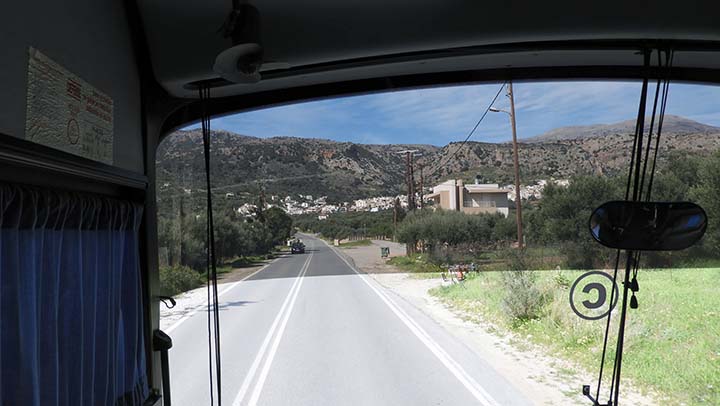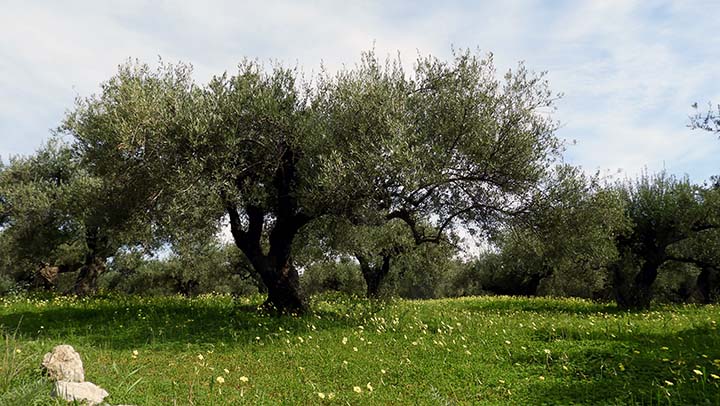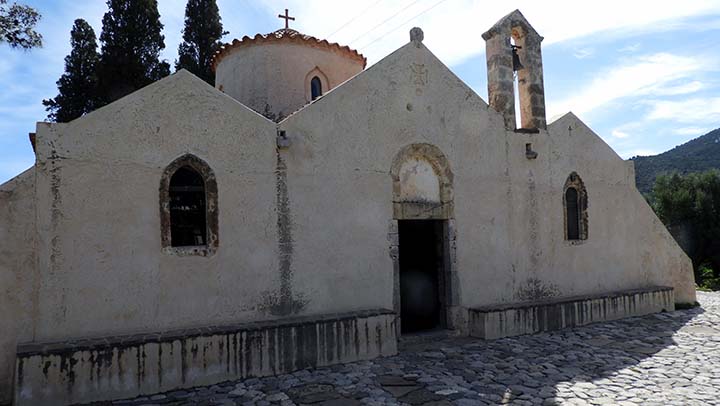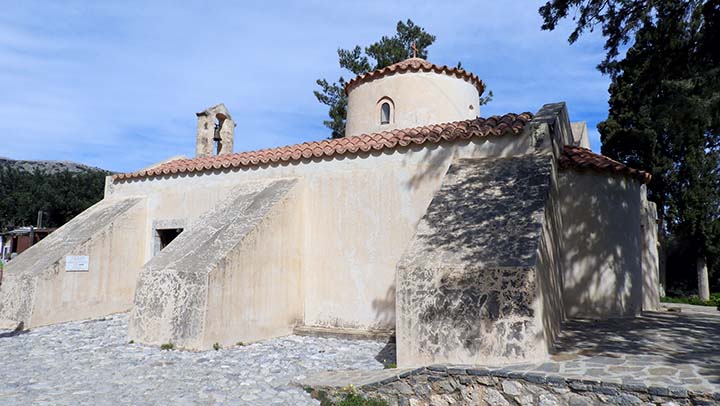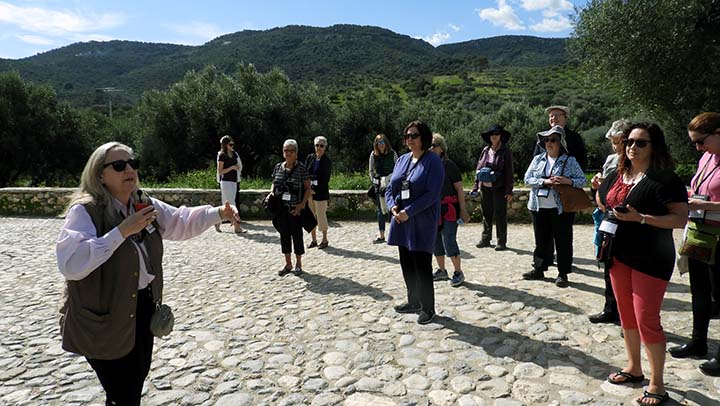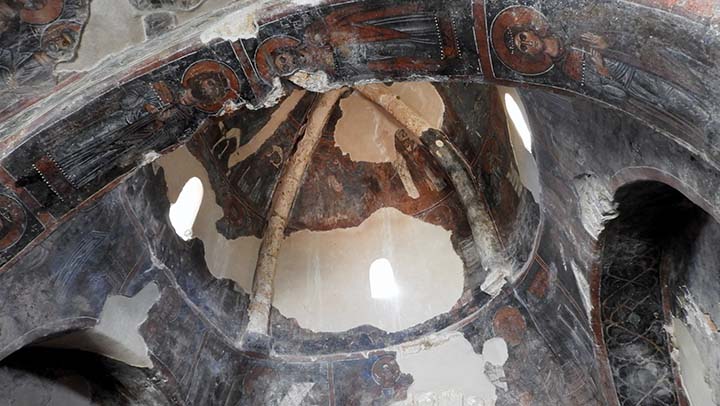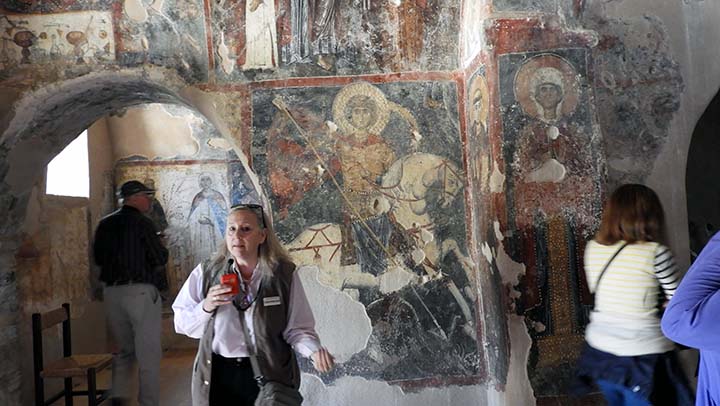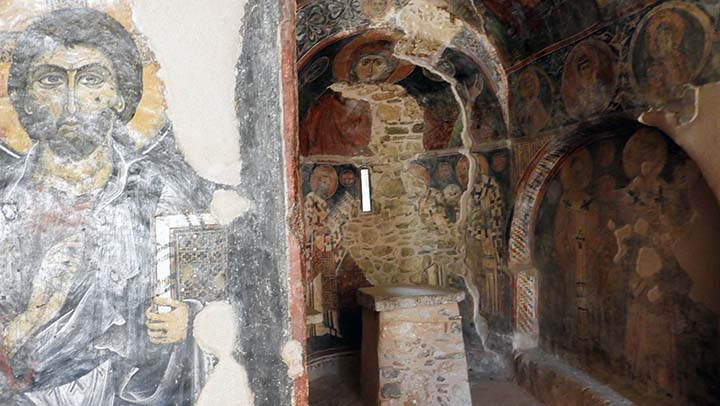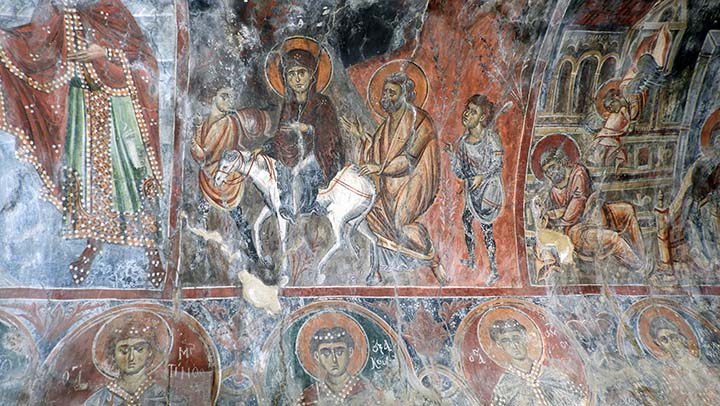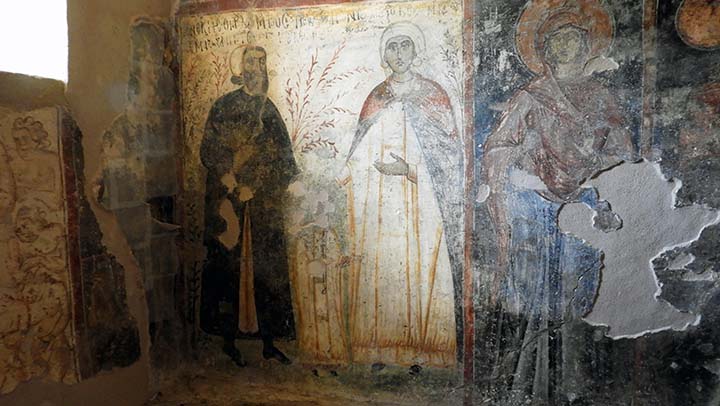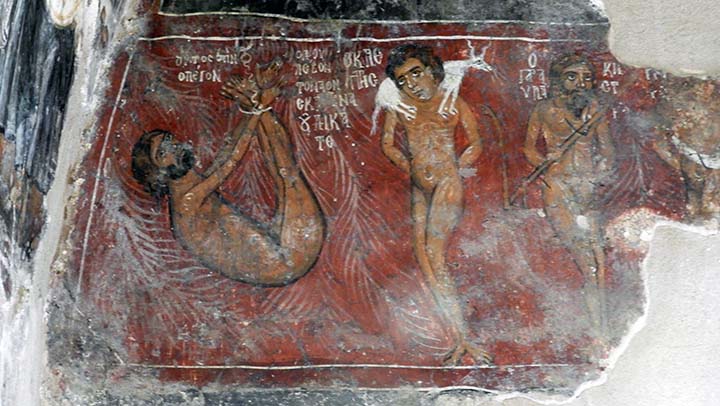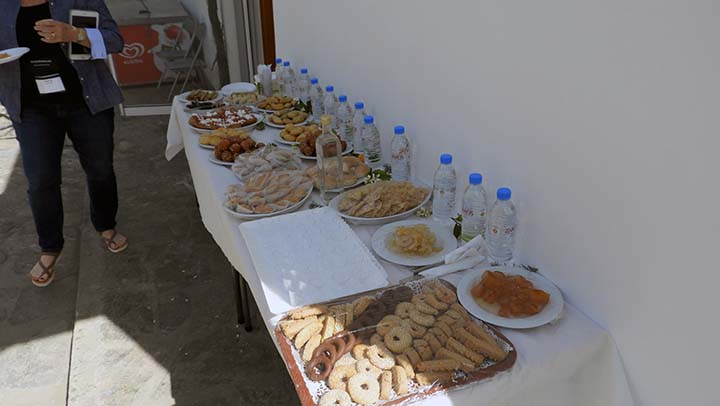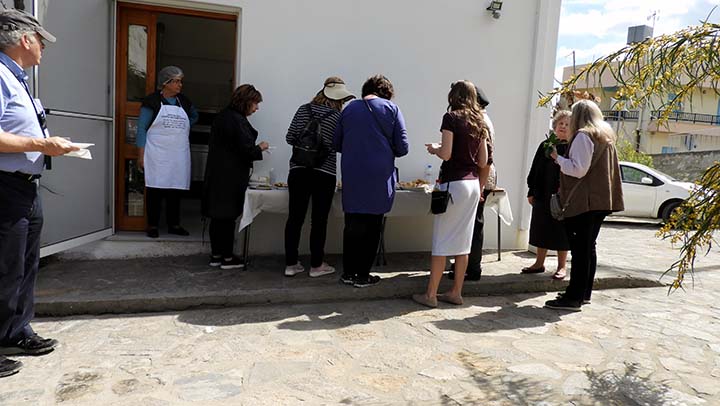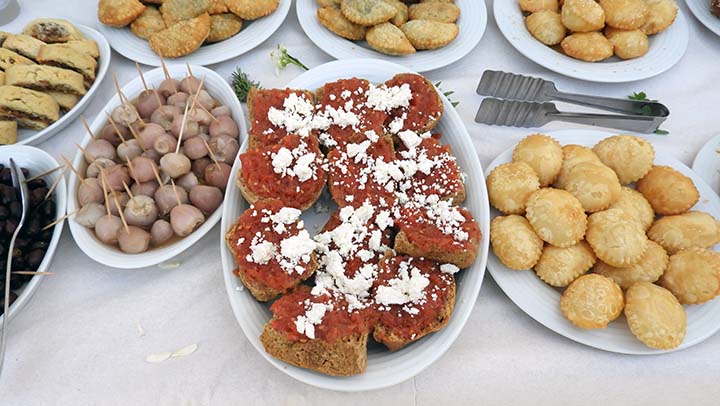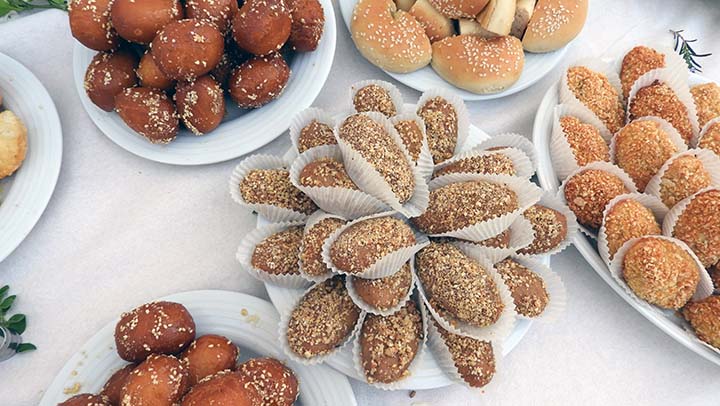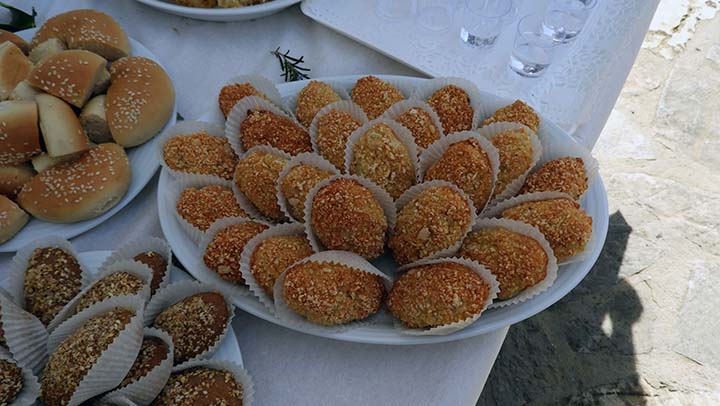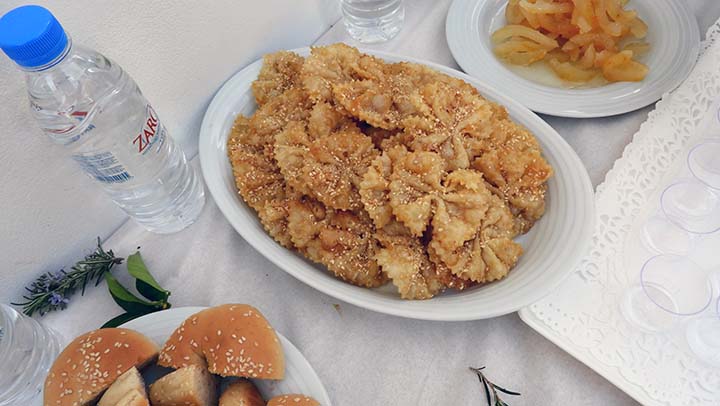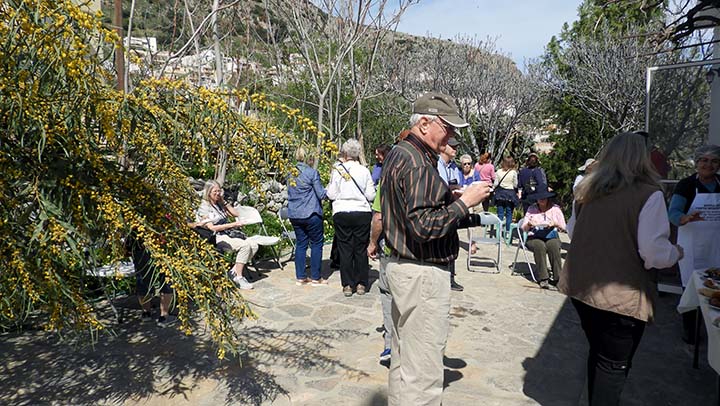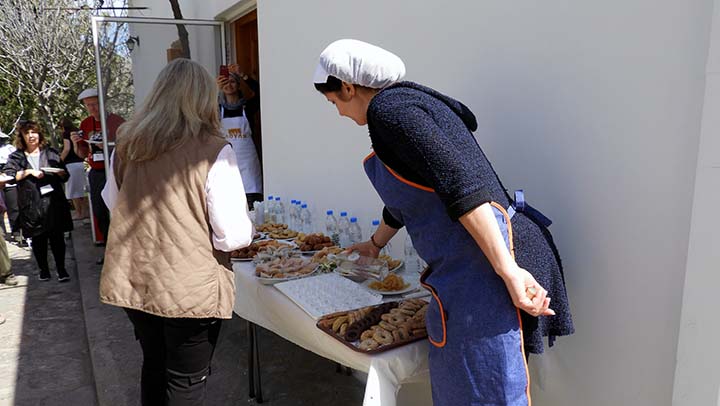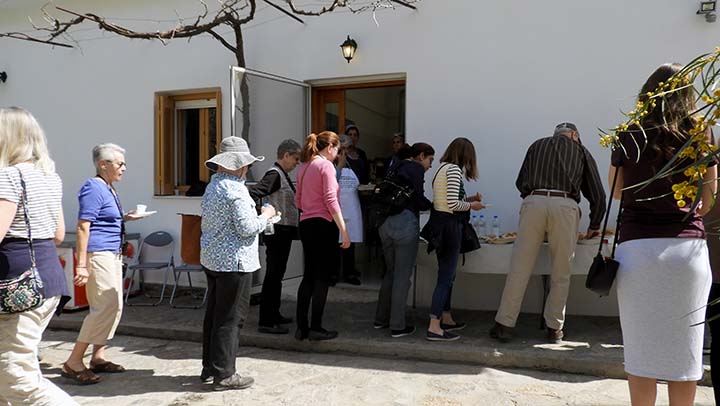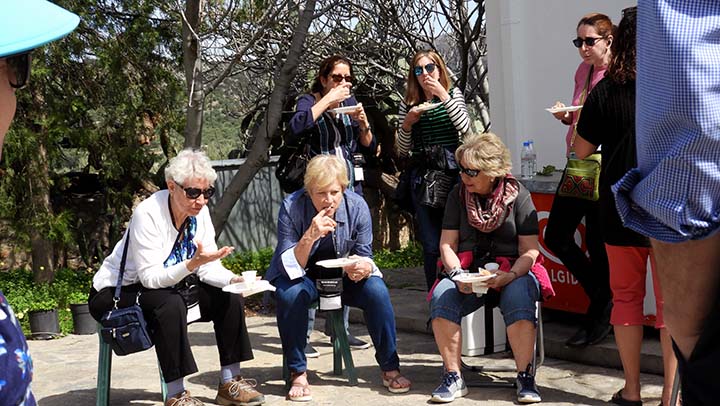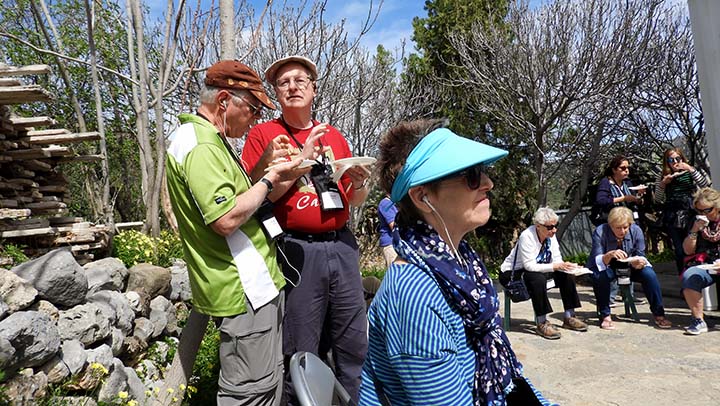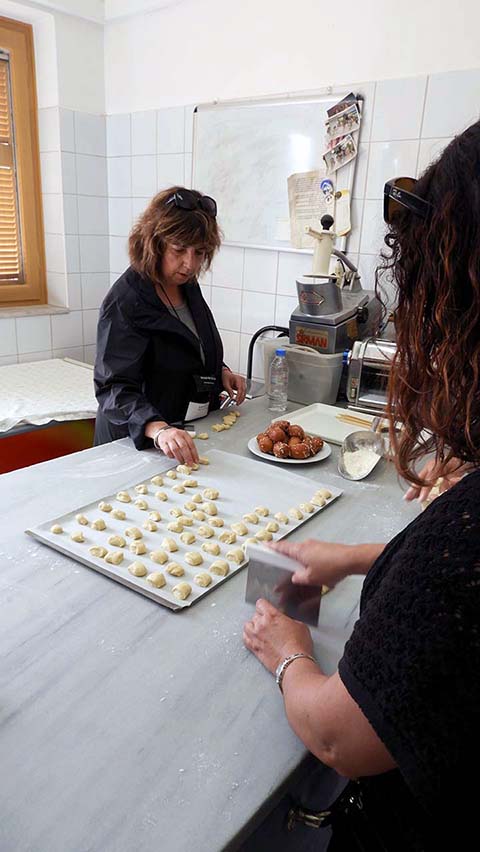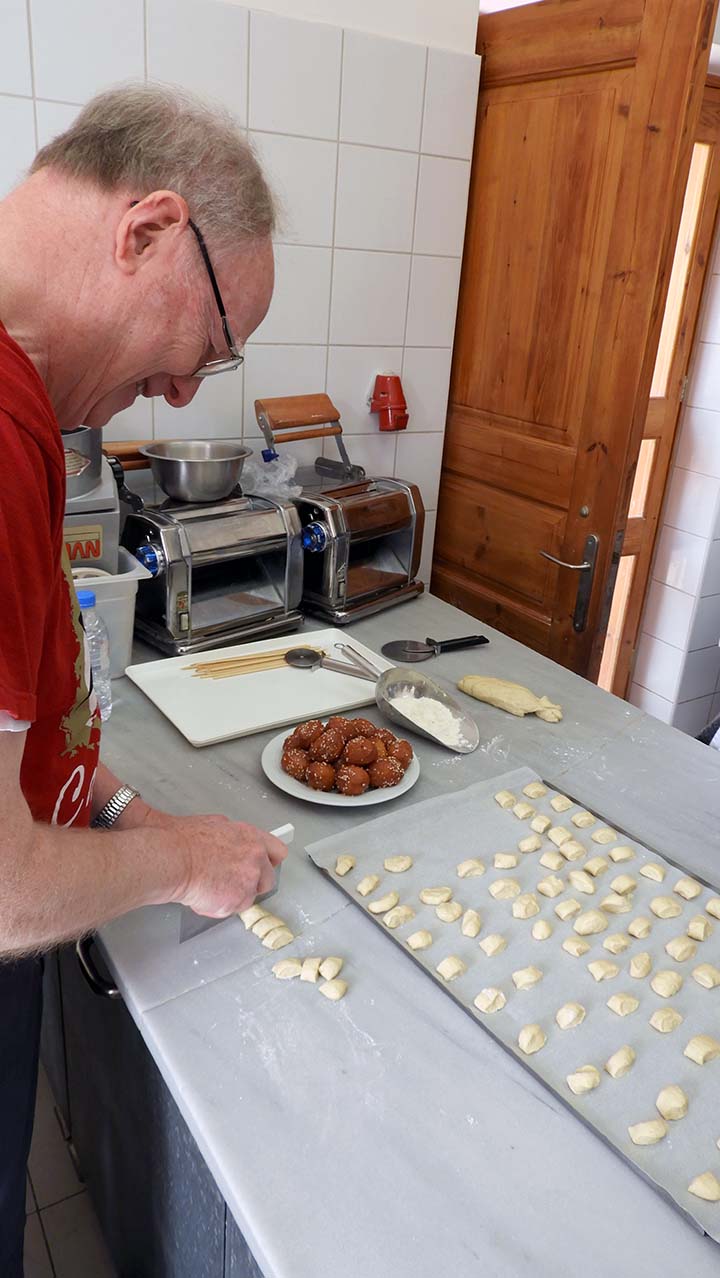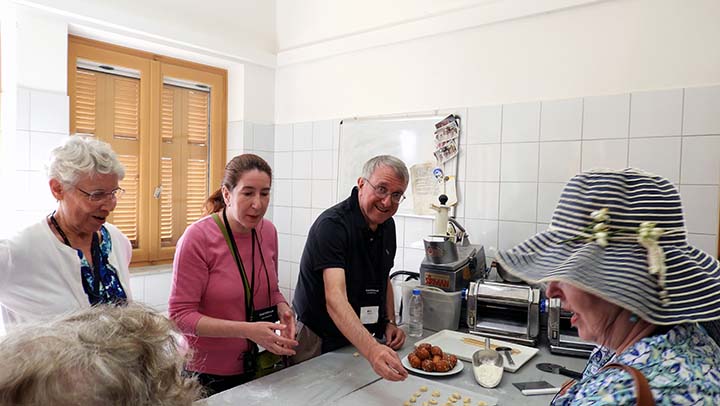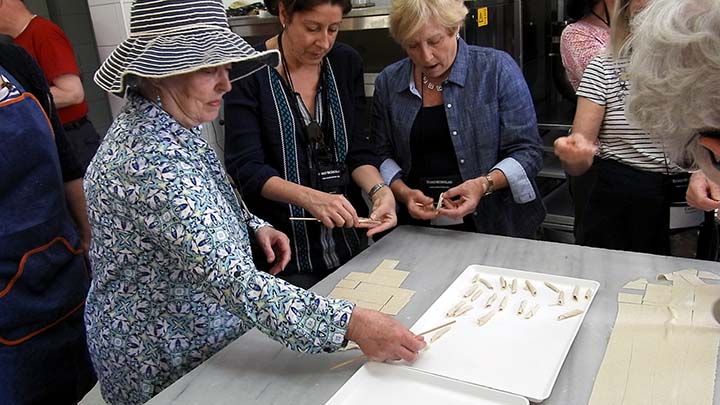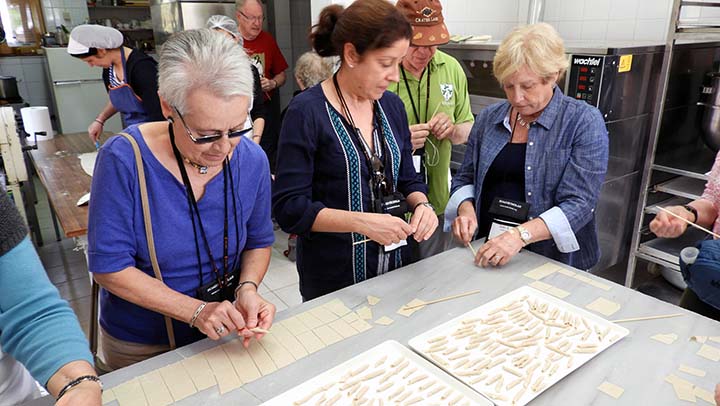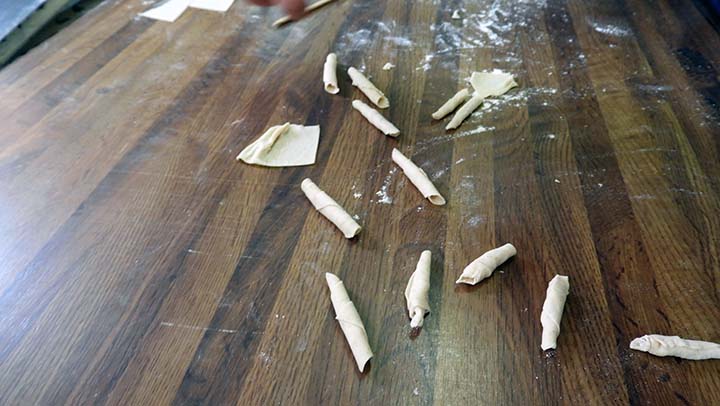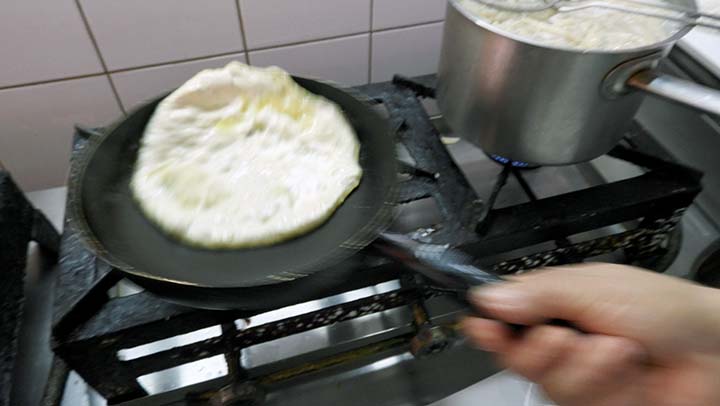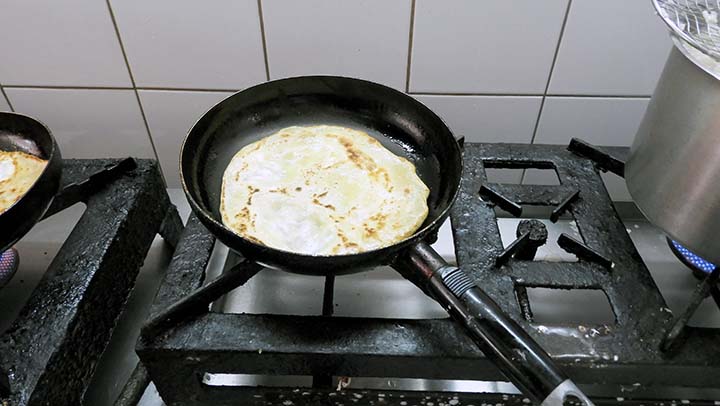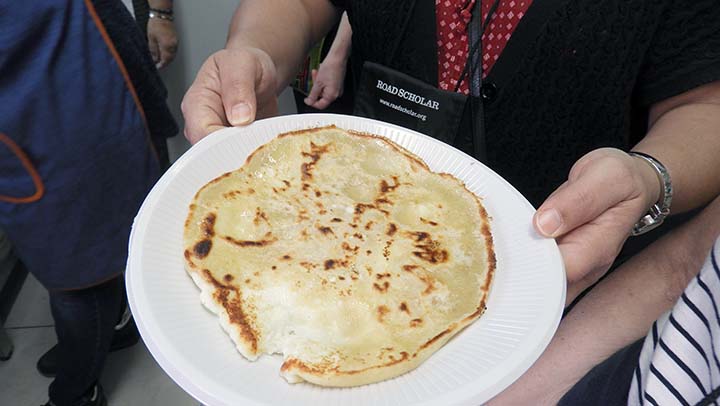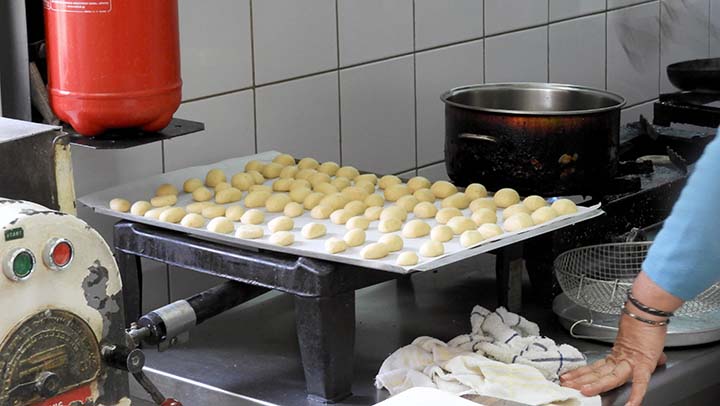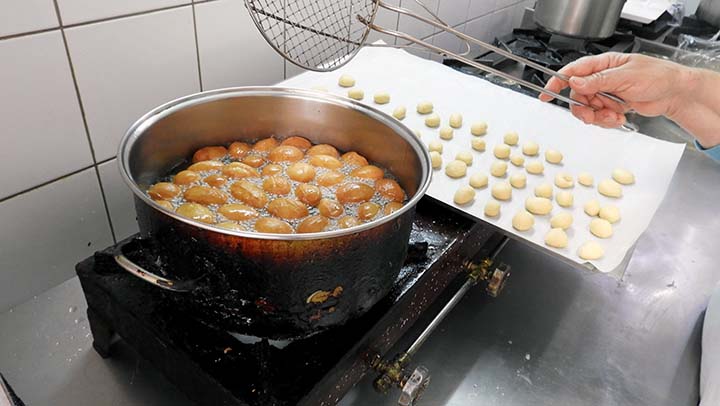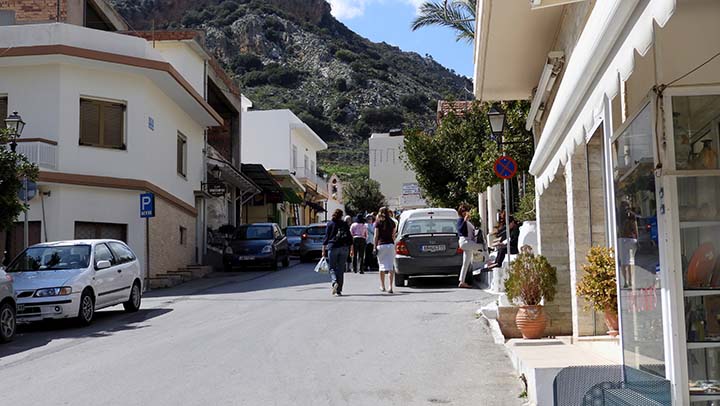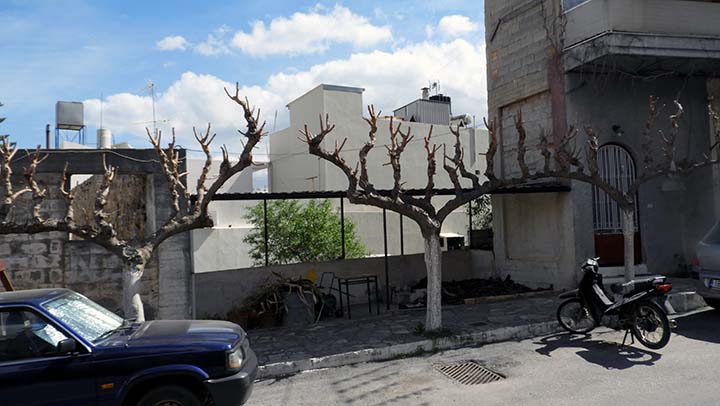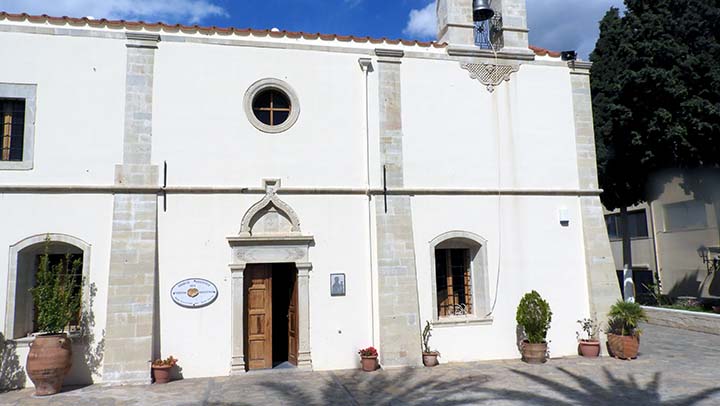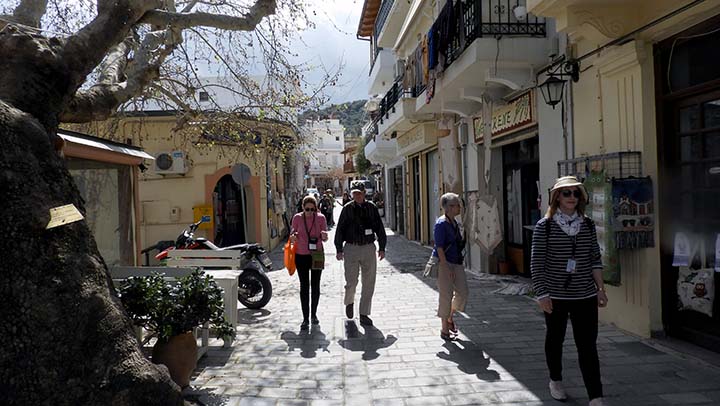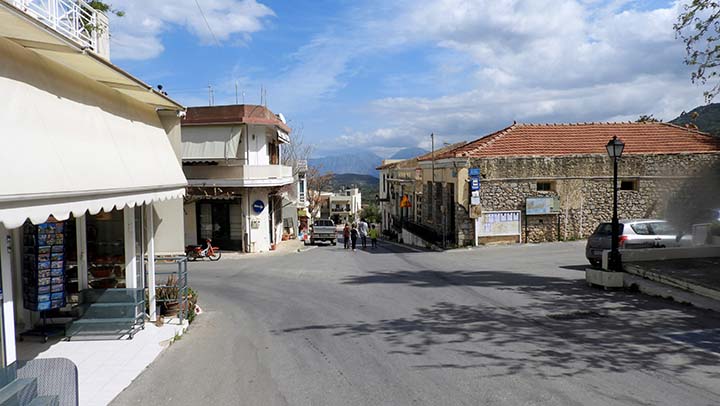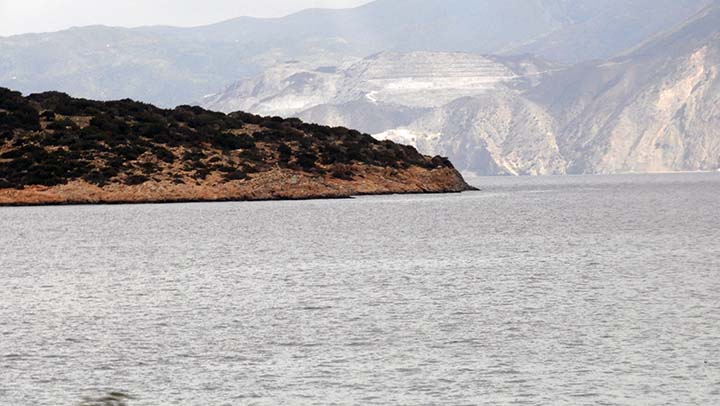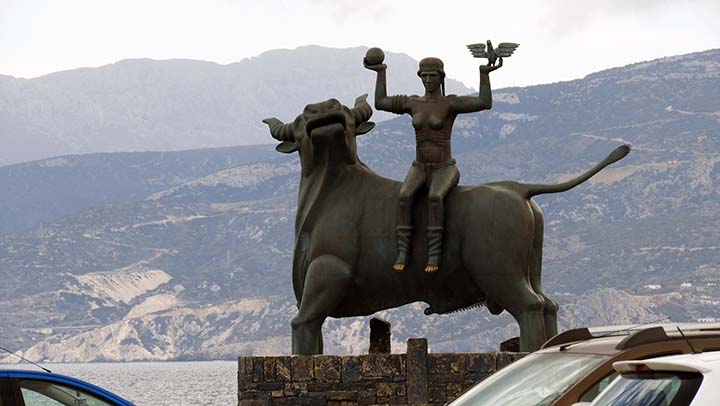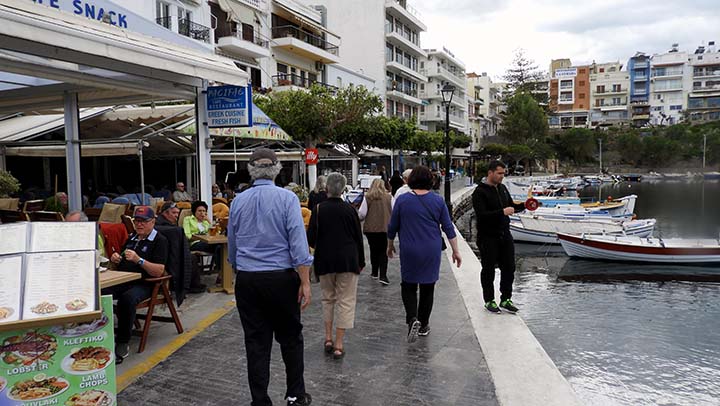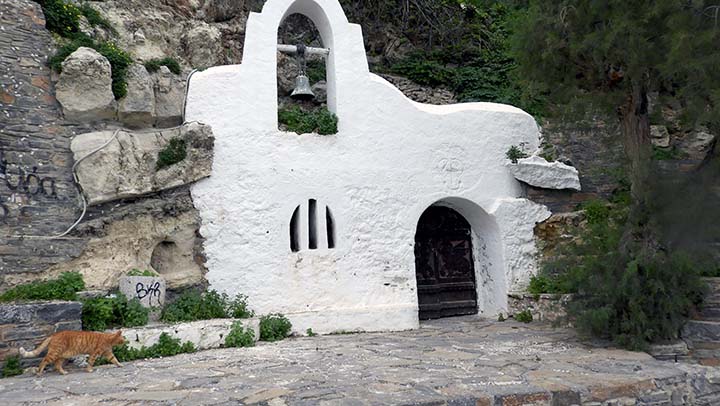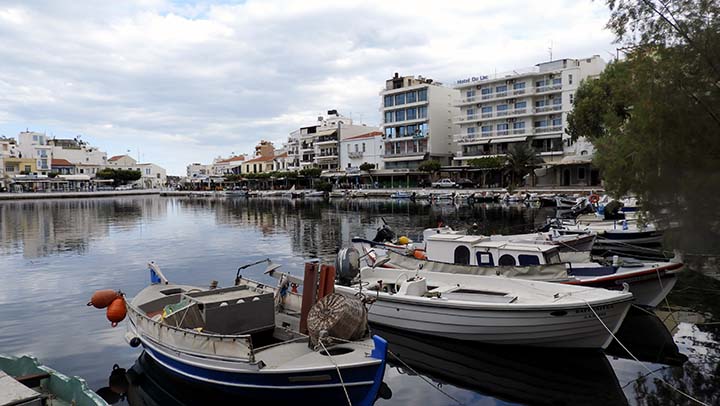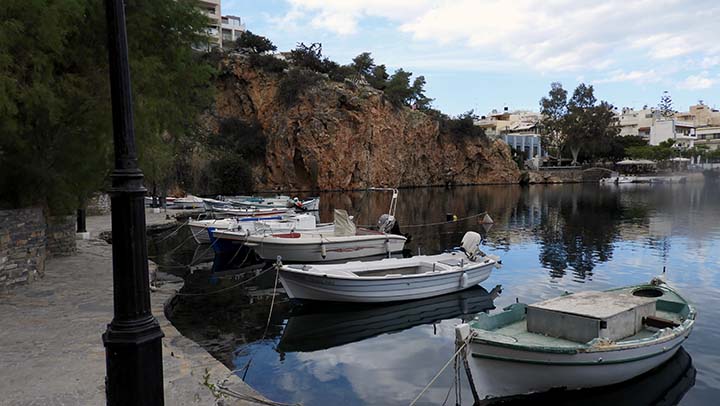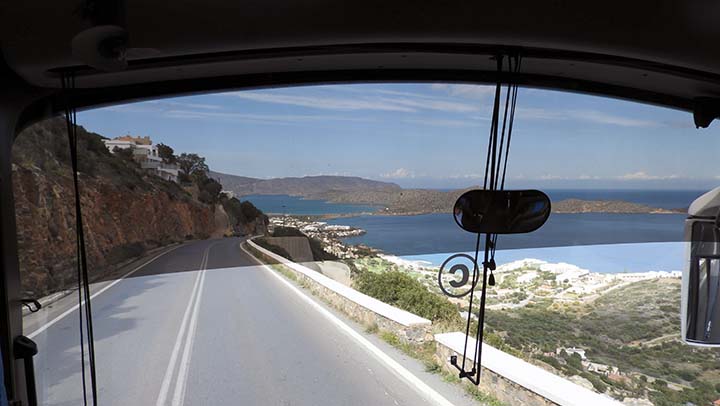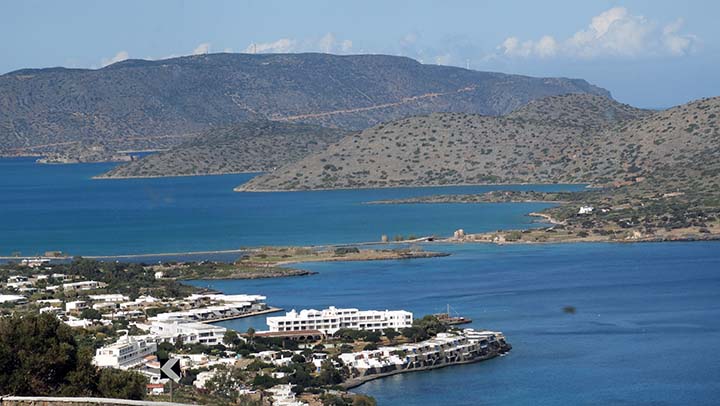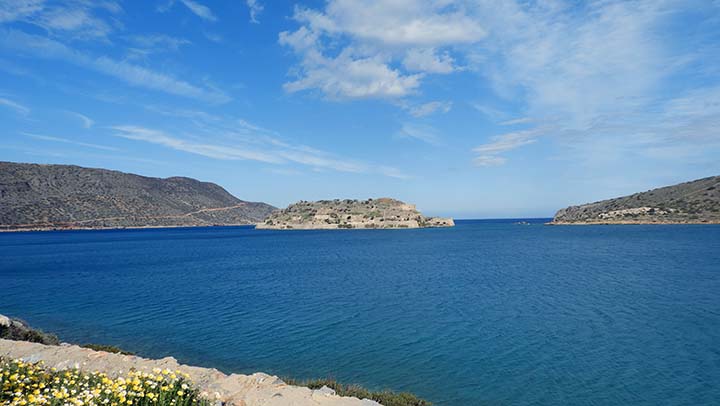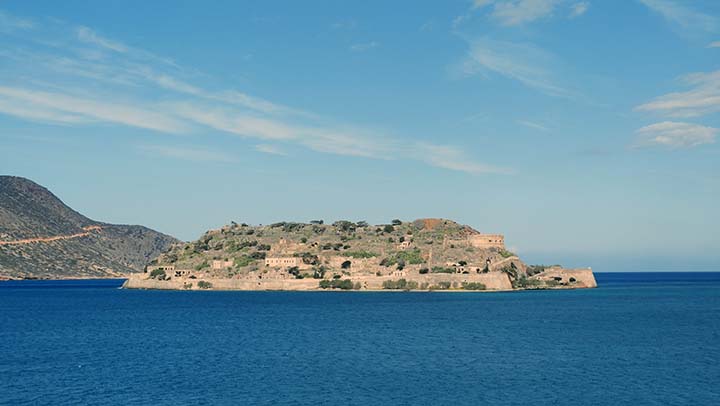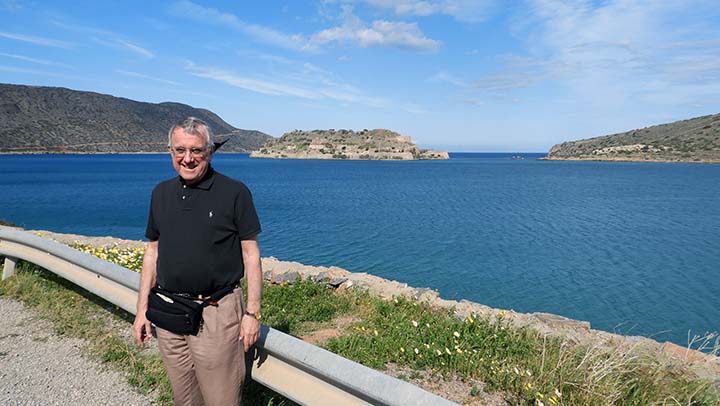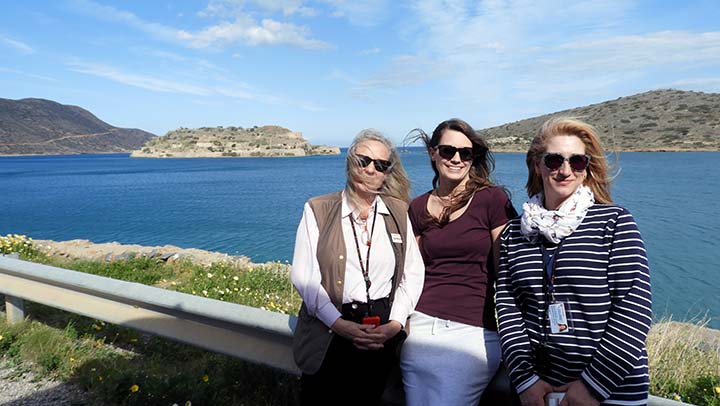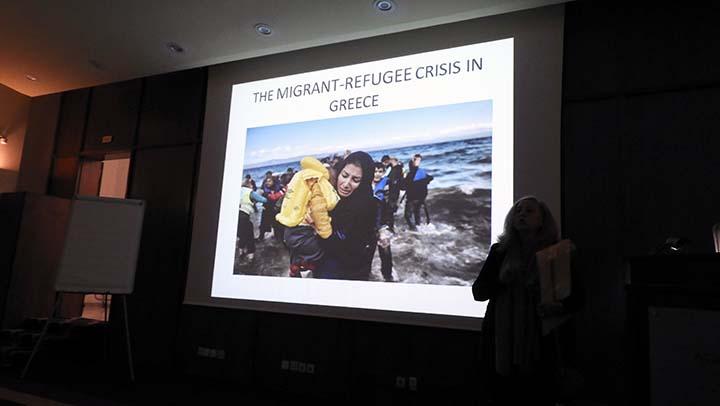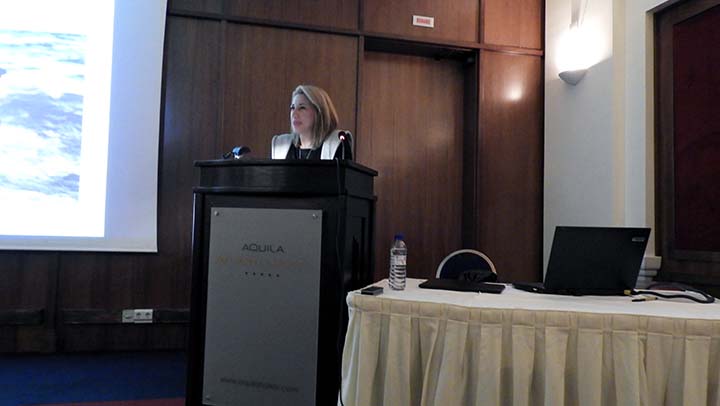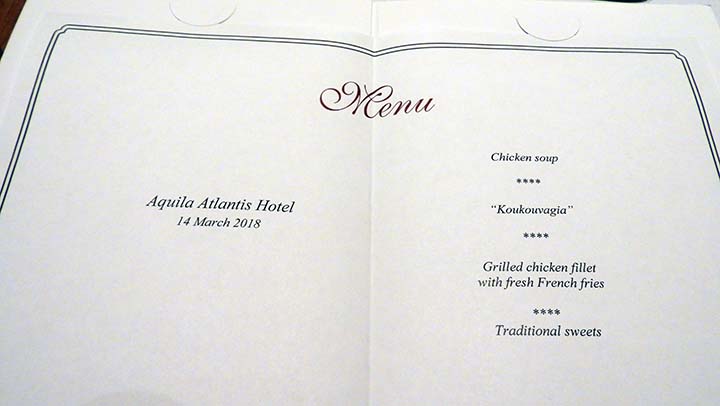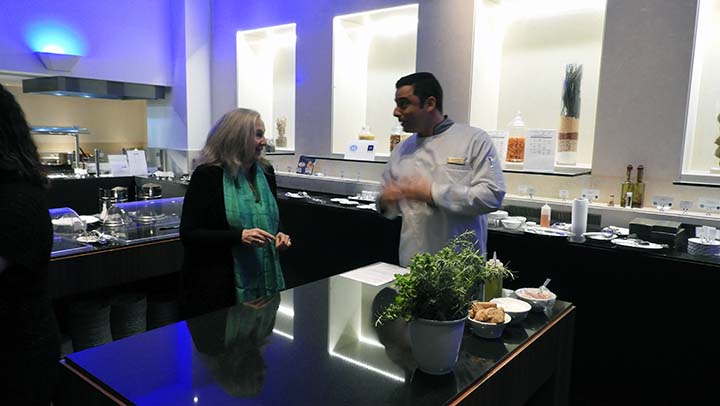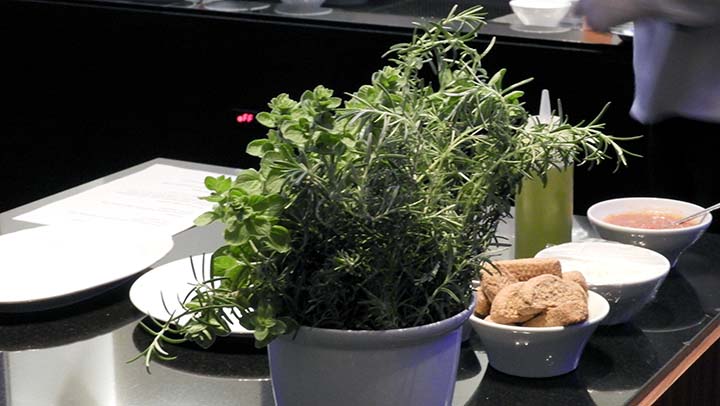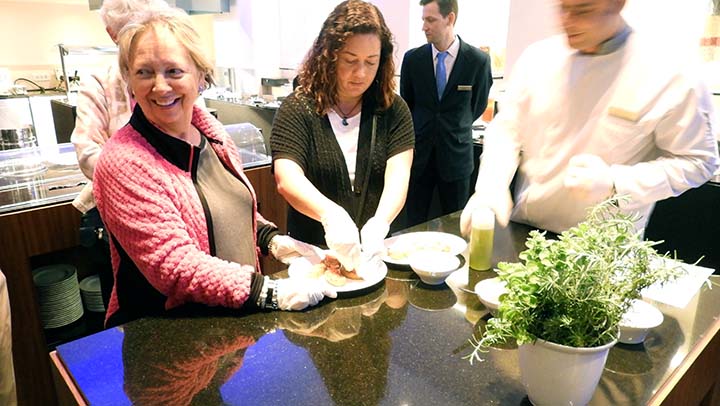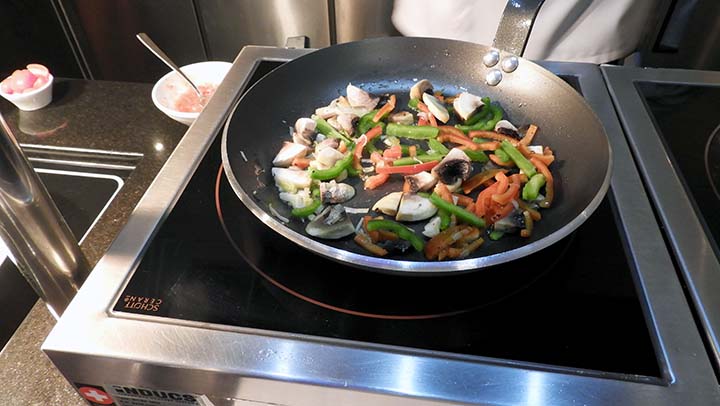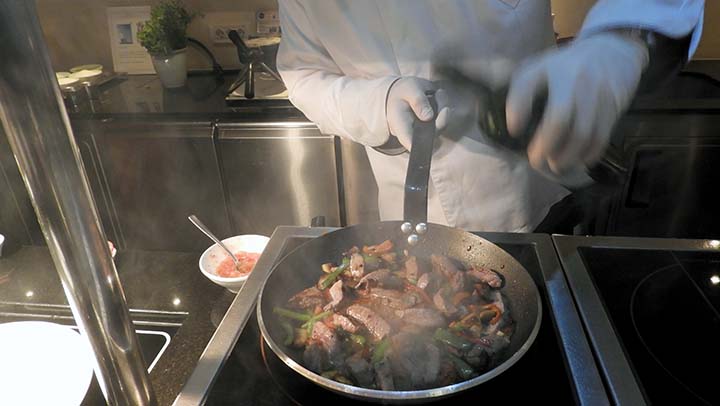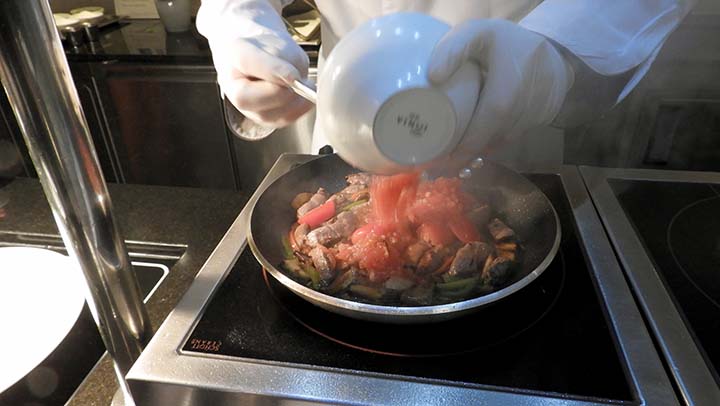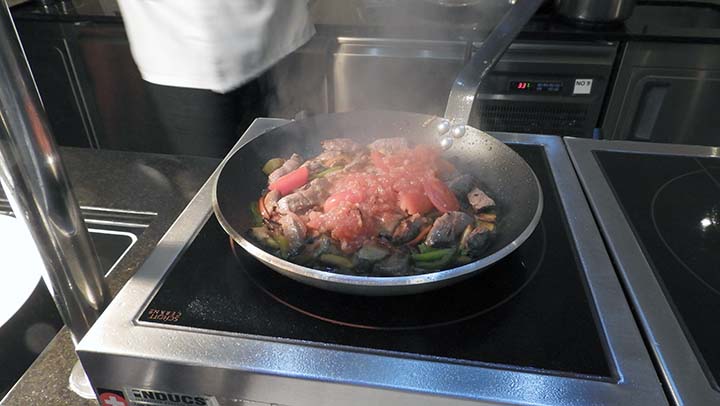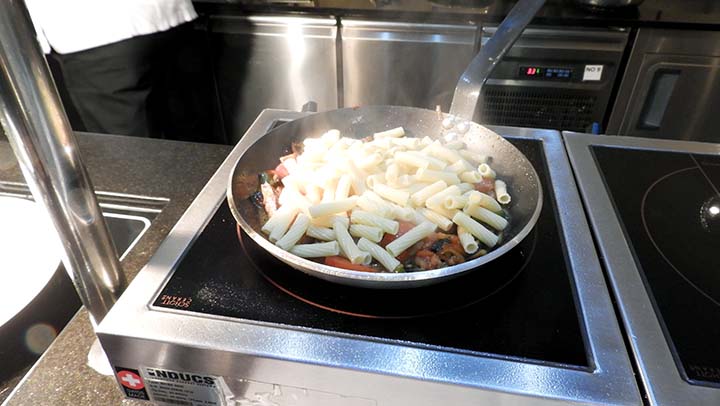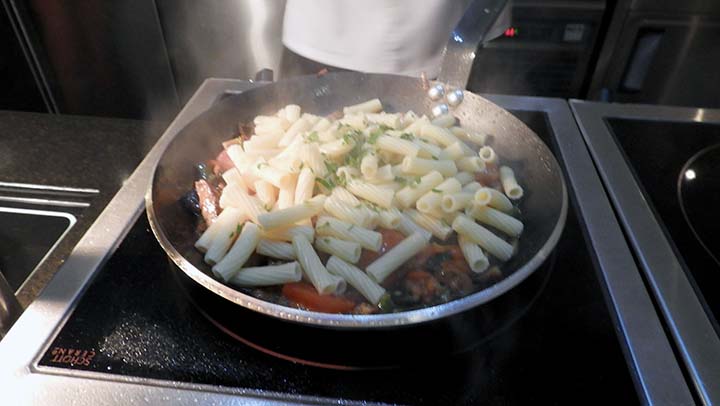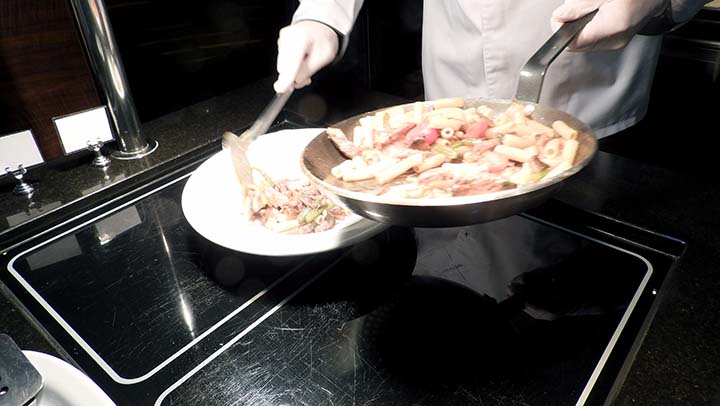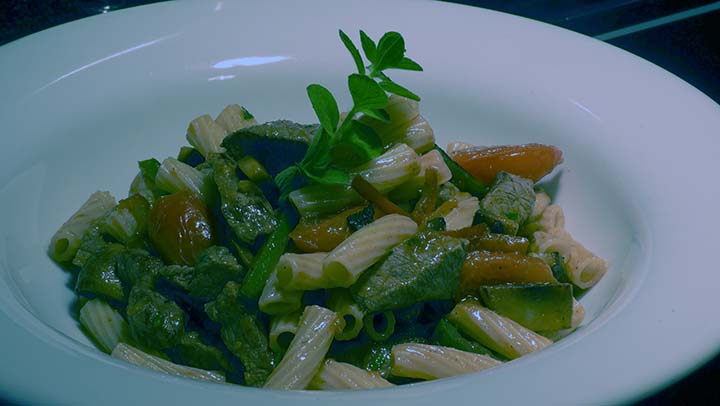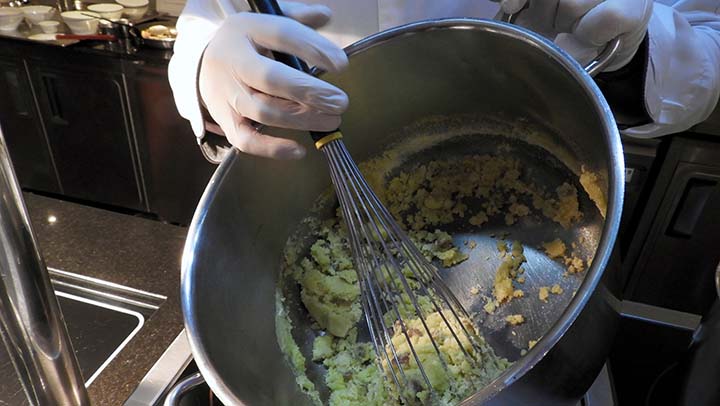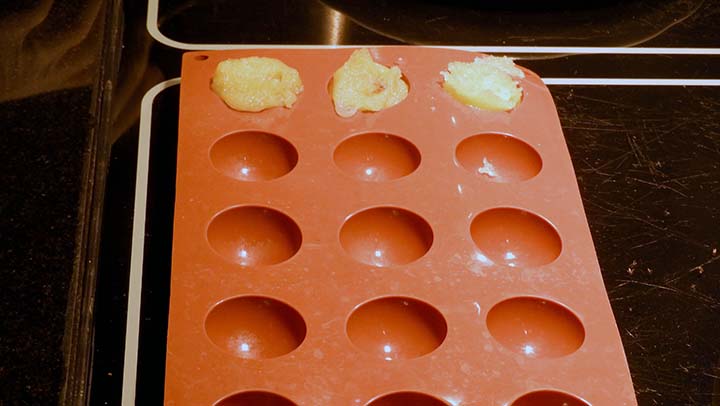|
Yesterday we traveled west along the northern coast of Crete; today we'll travel east to the little town of Kritsa.
They call this the Lasithi province.
There are olive trees in abundance everywhere you go on Crete.
Just before reaching Kritsa, we've stopped at Panagia Kera, a Byzantine church.
The Church of Panagia Kera is located 1 km (0.62 miles) from the village of Kritsa, in the Dikte Mountains. It contains the finest-preserved Byzantine-era frescoes in Crete, and for that reason, has become one of the most culturally and historically significant churches on the island.
The Late Greek word ‘Panagia’ is defined as ‘Virgin’ in English, and is among the titles of the Virgin Mary in the Eastern Orthodox Church. Although no founding date for the Church of Panagia Kera has been established, historical consensus agrees that the oldest parts of the church, the central nave, its vaulted roof and dome, were constructed and painted in the 13th century. The side-aisles of the church, its western entrance, and the belfry and the buttresses supporting the church, were later built and painted during the early to mid-14th century.
Eleni explains it all.
The frescoes on the dome and the central nave depict the following scenes from the New Testament: the Presentation, the Baptism, the Raising of Lazarus and the Entry into Jerusalem. The central aisle of the church is dedicated to the Virgin Mary and the Assumption. The frescoes on the western wall of the church depict the Crucifixion of Jesus and the Punishment of the Damned, with Michael the Archangel announcing the Second Coming. The south aisle of Saint Anne is decorated with images of the life of the Virgin Mary, and the north aisle is dedicated to Saint Anthony, with frescoes of the Second Coming and Judgment Day. Next to the north aisle is a depiction of Heaven, complete with the Patriarchs Abraham, Isaac and Jacob, as well as the Virgin Mary.
That's Jesus
Eleni explained that the church was constructed original for the benefit of workers in the fields owned by a Venetian family The workers were illiterate, so the interior walls of the church were covered in paintings that depict various events and concepts in the Bible. This enabled the congregants to visualize the Bible stories.
She said the reason the frescoes are still so vivid is that over the years they became coated in soot and wax from countless candles. This had the effect of protecting the paint.
It's been only in the past few years that these remarkable frescoes have been uncovered from behind centuries of grime. And thanks to the protection of the grime, today the frescoes practically glow with vivid colors.
This is the only non-religious fresco in the entire place. It's a picture of the original Venetian owners of the land, the couple who funded building the church.
Hell is a very bad place. You don't want to go there.
Now we're in Kritsa and we've stopped at the Co-operative Bakery of Kritsa, a startup small business spearheaded by a group of women determined to generate income and create better lives for themselves.
So they've started this operation that capitalizes on their expertise in preparing outstanding Greek pastries and other foods. They've become caterers.
And boy, can they ever put on a spread.
The Road Scholars are lining up to try everything
C'mon in, everybody.
Just look at the feast. The Greeks have their own version of bruschetta called dakos (also called "koukouvayia"). They put the topping on rusks, which are slices of dark bread that have been dried until they are crunchy. Absolutely delicious.
Some of these olives are found only in this region.
More sweets.
And still more.
They were all good, but those crunchy bow tie things covered with honey and sesame seeds were the best sweets on the table.
The Road Scholars are enjoying this.
Eleni enjoys watching one of our hosts pour a little glass of raki, or tsipouro, as they call it on Crete. It will put a fire in your belly.
Lining up for more.
It was a beautiful day for a picnic.
The Road Scholars enjoyed devouring sweets in the warm Cretan sunshine.
And then they went inside to do a little work. Those balls of dough on the tray will soon become those fried doughnut holes on the plate. And boy will they be tasty.
Let's place the balls of dough just so.
Paul is getting into the act. Something could have been lost in translation, but it seemed the ladies of the Cooperative were slightly surprised that a MAN would want to do this.
And when Bill indicated he wanted to try it too, they seemed incredulous.
Now we've progressed from cutting dough balls to rolling pasta. The little rolled-up squares are called skiufichta.
Everybody wants to give it a try.
Some of our skiufichta rolls look better than others.
Now let's make cheese pies.
First you wet your hands so nothing sticks and then you grab a big ball of dough and you press it into a cup shape and then you drop a ball of cheese into the cup and then you wrap the dough over the cheese and then you put the whole thing in a frying pan and you press it flat and you heat it up...
And you give it a flip...
And you brown it on both sides...
And voila! Cheese pie. And it's wonderful!
Here, let Carol show you how it's done.
Remember those little dough balls? Well, they've risen.
Now let's drop them in some hot oil and see what happens.
They may look just like hushpuppies but they taste like Greek doughnut balls. And they're terrific!
Now let's burn off some of those Greek pastry calories by taking a walk. Uphill. All walks in Greece go uphill. It seems to be a rule.
Practically everywhere we went in Greece we'd see these strangely denuded trees all along the sides of city streets. Obviously they'd been cut back before winter and they'll sprout branches and leaves again this spring. Right? Surely?
We were told they're mulberry trees and I'm sure they're beautifully decorative when the leaves sprout, but in March of this year they just looked a little spooky.
That's a church and Bill took a picture.
Quaint shops and the Road Scholars were virtually the only tourists on the street. The shop owners practically begged us to come inside, but I'm pretty sure nobody bought anything. We were too full of sweets. I guess.
What's this? A road leading downhill? Incredible!
There were pretty views around here.
Let's drive a little further down the road and enjoy the scenery along the way. We're headed toward the town of Agios Nikolaos, which is another way of saying St. Nicholas and which is, according to Eleni, absolutely NOT the same as Santa Claus. But Eleni, if you ever read this, have a look at what Wikipedia has to say: Saint Nicholas (Greek: Ἅγιος Νικόλαος, Hágios Nikólaos, Latin: Sanctus Nicolaus; 15 March 270 – 6 December 343), also called Nikolaos of Myra or Nicholas of Bari, was Bishop of Myra, in Asia Minor (modern-day Demre, Turkey), and is a historic Christian saint. Because of the many miracles attributed to his intercession, he is also known as Nikolaos the Wonderworker (Νικόλαος ὁ Θαυματουργός, Nikólaos ho Thaumaturgós). Saint Nicholas is the patron saint of sailors, merchants, archers, repentant thieves, children, brewers, pawnbrokers and students in various cities and countries around Europe. His reputation evolved among the faithful, as was common for early Christian saints, and his legendary habit of secret gift-giving gave rise to the traditional model of Santa Claus (“Saint Nick”) through Sinterklaas.
The first thing we saw upon pulling into a big parking lot in Agios Nikolaos was this bronze statue of Zeus and Europa. Do you know the story?
The most popular myth about Europa says that she was the
daughter of Agenor, a Phoenician king, and later became a wife
of Zeus, the King of Gods. According to the legend, Europa was
the epitome of feminine beauty on Earth. Zeus once saw her on
the seashore of Phoenicia playing with her friends. He was so
captivated by her beauty that he fell in love with her and
developed a strong desire to possess her. Immediately, he took
the form of a white bull and approached her. The bull looked
wonderful with its snow-white body and gem-like horns. Europa
looked at the extraordinary animal curiously and dared to touch
and later hang him because he appeared so calm to her. Later,
she was somehow motivated to climb on his back. As soon as she
did so, Zeus ran to the sea and carried her all the way from
Phoenicia to the island of Crete. There he regained his human
form and mated with her under an evergreen tree. This was the
abduction of Europa, who later gave birth to three sons of Zeus,
Minos, Rhadamanthys and Sarpedon. These men were known for their
fairness and became the three judges of the Underworld, when
they died. In fact, Minos founded the town of Knossos and gave
his name to an entire civilization, the Minoan civilization.
Zeus loved Europa so much that he showered her with three
priceless gifts. The first one was a bronze man, Talos, who
served as a guard to her. He was the bronze giant that the
Argonauts met and killed in their attempt to shore on Crete. The
second was a dog, Laelaps, which could hunt anything she wanted.
The last one was a javelin that had the power to hit the target,
whatever it was. Europa was later married to one of the kings of
Crete, Asterius, who adopted her sons and made her the first
queen of Crete. Source:
www.greeka.com
The most popular myth about Europa says that she was the
daughter of Agenor, a Phoenician king, and later became a wife
of Zeus, the King of Gods. According to the legend, Europa was
the epitome of feminine beauty on Earth. Zeus once saw her on
the seashore of Phoenicia playing with her friends. He was so
captivated by her beauty that he fell in love with her and
developed a strong desire to possess her. Immediately, he took
the form of a white bull and approached her. The bull looked
wonderful with its snow-white body and gem-like horns. Europa
looked at the extraordinary animal curiously and dared to touch
and later hang him because he appeared so calm to her. Later,
she was somehow motivated to climb on his back. As soon as she
did so, Zeus ran to the sea and carried her all the way from
Phoenicia to the island of Crete. There he regained his human
form and mated with her under an evergreen tree. This was the
abduction of Europa, who later gave birth to three sons of Zeus,
Minos, Rhadamanthys and Sarpedon. These men were known for their
fairness and became the three judges of the Underworld, when
they died. In fact, Minos founded the town of Knossos and gave
his name to an entire civilization, the Minoan civilization.
Zeus loved Europa so much that he showered her with three
priceless gifts. The first one was a bronze man, Talos, who
served as a guard to her. He was the bronze giant that the
Argonauts met and killed in their attempt to shore on Crete. The
second was a dog, Laelaps, which could hunt anything she wanted.
The last one was a javelin that had the power to hit the target,
whatever it was. Europa was later married to one of the kings of
Crete, Asterius, who adopted her sons and made her the first
queen of Crete. Source:
www.greeka.com
The most popular myth about Europa says that she was the
daughter of Agenor, a Phoenician king, and later became a wife
of Zeus, the King of Gods. According to the legend, Europa was
the epitome of feminine beauty on Earth. Zeus once saw her on
the seashore of Phoenicia playing with her friends. He was so
captivated by her beauty that he fell in love with her and
developed a strong desire to possess her. Immediately, he took
the form of a white bull and approached her. The bull looked
wonderful with its snow-white body and gem-like horns. Europa
looked at the extraordinary animal curiously and dared to touch
and later hang him because he appeared so calm to her. Later,
she was somehow motivated to climb on his back. As soon as she
did so, Zeus ran to the sea and carried her all the way from
Phoenicia to the island of Crete. There he regained his human
form and mated with her under an evergreen tree. This was the
abduction of Europa, who later gave birth to three sons of Zeus,
Minos, Rhadamanthys and Sarpedon. These men were known for their
fairness and became the three judges of the Underworld, when
they died. In fact, Minos founded the town of Knossos and gave
his name to an entire civilization, the Minoan civilization.
Zeus loved Europa so much that he showered her with three
priceless gifts. The first one was a bronze man, Talos, who
served as a guard to her. He was the bronze giant that the
Argonauts met and killed in their attempt to shore on Crete. The
second was a dog, Laelaps, which could hunt anything she wanted.
The last one was a javelin that had the power to hit the target,
whatever it was. Europa was later married to one of the kings of
Crete, Asterius, who adopted her sons and made her the first
queen of Crete. Source:
www.greeka.com
The most popular myth about Europa says that she was the
daughter of Agenor, a Phoenician king, and later became a wife
of Zeus, the King of Gods. According to the legend, Europa was
the epitome of feminine beauty on Earth. Zeus once saw her on
the seashore of Phoenicia playing with her friends. He was so
captivated by her beauty that he fell in love with her and
developed a strong desire to possess her. Immediately, he took
the form of a white bull and approached her. The bull looked
wonderful with its snow-white body and gem-like horns. Europa
looked at the extraordinary animal curiously and dared to touch
and later hang him because he appeared so calm to her. Later,
she was somehow motivated to climb on his back. As soon as she
did so, Zeus ran to the sea and carried her all the way from
Phoenicia to the island of Crete. There he regained his human
form and mated with her under an evergreen tree. This was the
abduction of Europa, who later gave birth to three sons of Zeus,
Minos, Rhadamanthys and Sarpedon. These men were known for their
fairness and became the three judges of the Underworld, when
they died. In fact, Minos founded the town of Knossos and gave
his name to an entire civilization, the Minoan civilization.
Zeus loved Europa so much that he showered her with three
priceless gifts. The first one was a bronze man, Talos, who
served as a guard to her. He was the bronze giant that the
Argonauts met and killed in their attempt to shore on Crete. The
second was a dog, Laelaps, which could hunt anything she wanted.
The last one was a javelin that had the power to hit the target,
whatever it was. Europa was later married to one of the kings of
Crete, Asterius, who adopted her sons and made her the first
queen of Crete. Source:
www.greeka.com
The most popular myth about Europa says that she was the daughter of Agenor, a Phoenician king, and later became a wife of Zeus, the King of Gods. According to the legend, Europa was the epitome of feminine beauty on Earth. Zeus once saw her on the seashore of Phoenicia playing with her friends. He was so captivated by her beauty that he fell in love with her and developed a strong desire to possess her. Immediately, he took the form of a white bull and approached her. The bull looked wonderful with its snow-white body and gem-like horns. Europa looked at the extraordinary animal curiously and dared to touch and later hold onto him because he appeared so calm to her. Later, she was somehow motivated to climb on his back. As soon as she did so, Zeus ran to the sea and carried her all the way from Phoenicia to the island of Crete. There he regained his human form and mated with her under an evergreen tree. This was the abduction of Europa, who later gave birth to three sons of Zeus, Minos, Rhadamanthys and Sarpedon. These men were known for their fairness and became the three judges of the Underworld, when they died. In fact, Minos founded the town of Knossos and gave his name to an entire civilization, the Minoan civilization. Zeus loved Europa so much that he showered her with three priceless gifts. The first one was a bronze man, Talos, who served as a guard to her. He was the bronze giant that the Argonauts met and killed in their attempt to shore on Crete. The second was a dog, Laelaps, which could hunt anything she wanted. The last one was a javelin that had the power to hit the target, whatever it was. Europa was later married to one of the kings of Crete, Asterius, who adopted her sons and made her the first queen of Crete. Source: www.greeka.com The way Eleni told it, the bull flew through the sky to Crete, much to Europa's astonishment. Bill liked Eleni's version better.
Agios Nikolaos, is a beautiful coastal city of approximately 20,000 people located in the northeast area of the Greek island of Crete. The town was settled in the Late Bronze Age by the Dorians at Lato upon which Agios Nikolaos was later built. A key attraction for the Dorians was what is now known as the harbor at Agios Nikolaos.
Agios Nikolaos is probably best known as a tourist town that serves as a hub to the twenty or so small villages and farms that make up that region of Crete. Tourist attractions include the lagoon Lake Voulismeni, small beaches in the town, the island of Agioi Pantes, the archaeological museum, the local flora exhibition, and numerous fairs. The lagoon features a small park with a trail, traditional fishing boats, ducks, pigeons, an amphitheatre and many cafes.
So let's walk around the lagoon.
Hey look! A chapel! I wonder if there are frescoes inside?
And boats!
Eleni says the local legend is that the lagoon is so deep nobody has ever found the bottom. You believe that one, don't you?
Now let's head back toward Heraklion.
And take in some pretty views along the way.
Say, what's that strange island over there?
It's Spinalonga, the site of one of the last leper colony in Europe. All the remaining lepers left in 1957. Eleni said it's so close to the mainland that quarantining patients there didn't work so well. At night they could swim to the mainland to visit with relatives and then swim back before morning without being caught.
It's pretty here, and I'm glad the bus stopped so we could take pictures.
Bill is enjoying the pretty day.
That's Eleni, our wonderful guide, Olivia, a manager at Road Scholar HQ responsible for this and other Balkans tours, and Efi, Eleni's delightful assistant on this trip and an experienced guide in her own right.
In fact, later that evening Efi gave us a lecture on the current refugee crisis in Greece. Because of wars in the Middle East, huge numbers of people have had their lives so disrupted that they have fled their homelands. As it has for millennia, Greece's location between the powers of the East and the West puts the country in the center of conflict. In the present day Greece is not a wealthy country, but it has found itself conscripted into serving as a safe haven for refugees. About 45,000 migrants are currently stranded in Greece awaiting decisions on their status. More than a million people have arrived in the country since 2015, about 40 per cent of them children.
Efi did a masterful job of helping us understand how this is all playing out.
And then we went to eat.
Eleni had arranged for our group to receive a cooking lesson from the hotel chef.
He specialized in using local ingredients to prepare authentic Cretan dishes for hotel guests.
And of course we all got involved.
More dakos, the Greek bruschetta.
We learned how to make our own tzatziki. You know, the yogurt sauce used on gyros.
Everybody pitched in.
And then the chef whipped up a delicious-looking dish with sauteed peppers and mushrooms...
And strips of beef...
Nicely sauteed...
With added tomatoes...
Nicely sauteed...
And pasta...
Nicely sauteed...
And lovingly ladled into a plate...
Ahhh...Bill can't wait to try this in a little while. And sure enough, the plate was passed around to all the Road Scholars. And just who do you think was the last person to be passed the plate? Hm? Bill, that's who. And do you think there was even a morsel of that succulent beef left on the plate? Well, no...just a few scrawny pasta leftovers. Poor Bill...he's clearly going to starve on this trip.
But wait, there's more! Let's learn how to make that ubiquitous and unpleasant (to Bill) semolina dessert concoction. I think it's called "halvas," but don't quote me on that. The chef told us this recipe was "as simple as 1-2-3-4," which means one part olive oil, two parts semolina flour, three parts sugar and four parts water. You just mix it up and you cook it and...
Doesn't it look delicious?
You put it in molds ...
And you get little semolina things that didn't tickle Bill's taste buds no matter how many times he tried this stuff on the trip. But they did taste better than what they looked like.
Eleni explains it all.
|

